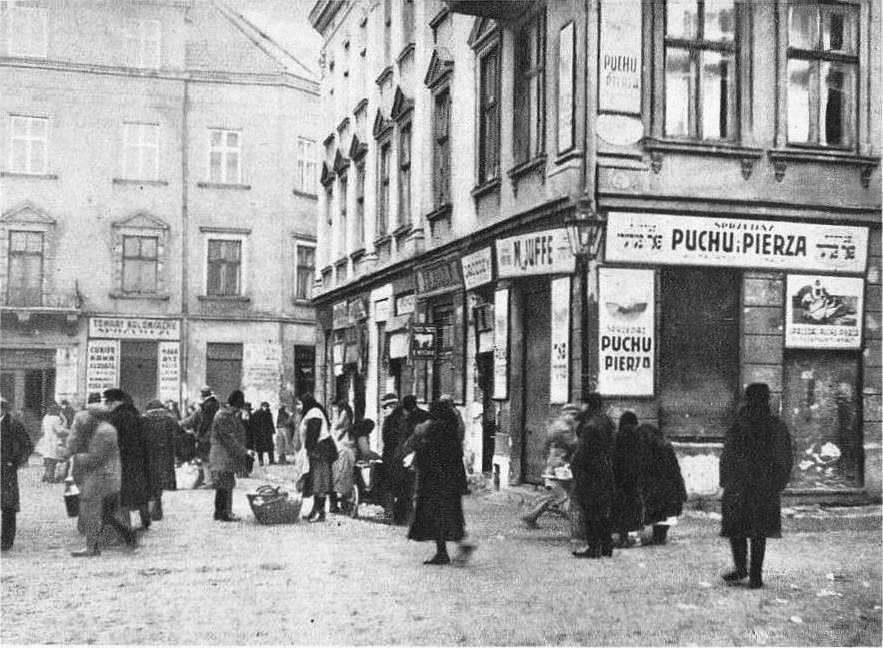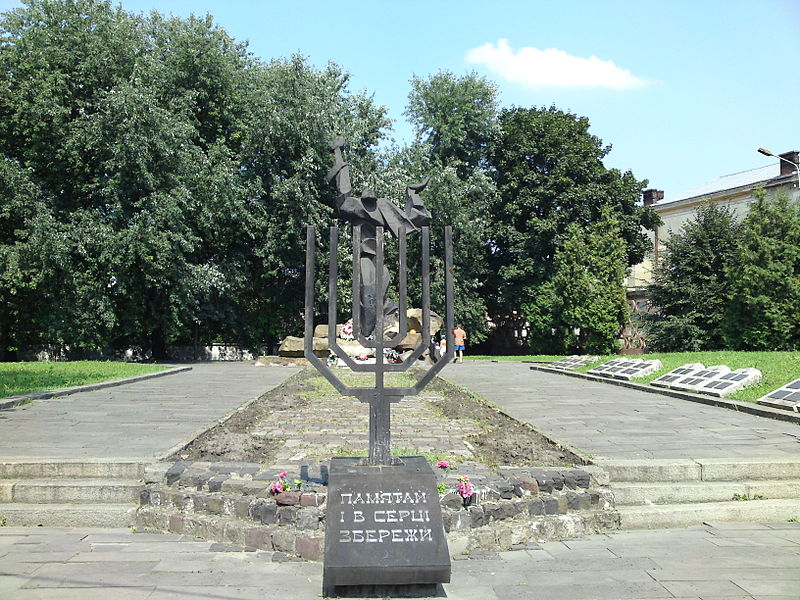
The terrifying war against Ukraine changes, of course, the function of these pages devoted to the Jewish cultural heritage of that country. Many of the places mentioned were razed to the ground by bombs. While these pages are not intended in the present time for tourism, they may be useful to researchers and students as historical references. References to so many painful histories during the pogroms and the Shoah, but also to the glorious history of Ukrainian Judaism, in its cultural, religious and Zionist dimensions. Wishing the Ukrainian people a speedy end to these atrocities of which they are victims.
Lvov -Lviv in Ukrainian, Lwów in Polish, Lemberg in German, Léopold in French- a city long Polish, then Austro-Hungarian, was again Polish between the wars. Annexed in 1939 by the Soviet Union after the German-Soviet nonaggression pact, it was occupied from 1941 to 1944 by Nazi Germany, taken back by the Soviets after the Second World War, and later reattached to Ukraine.

The Jewish community of Lvov was mentioned as far back as the thirteenth century, since, that is, the founding of the city. In the latter half of the fourteenth century, the city featured twi Jewish quarters, distinguishing Lvov from most other large European cities. The first, dating from 1352, was located “beyond the walls” around the Stary Rynek (Old Market) Square in the Kraków suburb (Krakowskie Przedmiejsce); the other, which dates from 1387, was located inside the city.
The old ghetto within the walls
The former ghetto stretched across the present-day Ruska, Straroevreiska, and Federova streets, near the Arsenal, southeast of the center of town. Today, you can see the remains of the Fedorovaolotaya Roza Gildene Roiz (Grand Synagogue of the Golden Rose) at the intersection of Straroevreiska and Federova streets.

Built in 1582, the synagogue was a late Gothic masterpiece with high lancet arches that towered over the entire quarter. It was of the most beautiful and oldest buildings in Lvov -until the Second World War. It owed its name to Rabbi Nahman’s wife, Rosa Jakubovna. Destroyed in 1941 by the Nazis, today there remains only the empty square, a few vestiges of the arches, and a commemorative plaque in English and Ukrainian.
The former ghetto beyond the walls
The former ghetto “beyond the walls” covered much larger area. This is where, north of the city center, Jews from Lvov settled throughout the nineteenth and twentieth centuries. The quarter became, during the German occupation, a “ghetto” in that special sense the Nazis gave the term.
Behind the opera was located the Zydowska Brama (Jewish Gate), a few steps away from the Krakowska Brama (Kraków Gate), referred to as Vor der Shul (in front of the synagogue) by the Jews of Lvov.
The present-day Bogdan-Khmelnitsky Street turns into Zamarstynowska Street, the central street of the ghetto. Here, all the houses before the war were Jewish. On little Santa Street, formerly Boznicza (Synagogue Street) stood the suburb’s great synagogue and, a bit further down, the Hasidim Schul. The two sites are today empty lots. A plaque in English and Ukrainian was recently mounted on the wall of the former Hasidic synagogue; built in the seventeenth century it was reconstructed in the nineteenth century and destroyed in 1941.
The Hasidic synagogue
Only one temple can still be visited in this quarter, which once contained so many: the former Synagogue of Hasidic Innovators. Used for many years as a gymnasium, it was recently returned into the Jewish community and now contains the offices of the Sholem Aleichem Cultural Association . The association organizes meetings for the elderly and publishes the review Shofar.
To penetrate Lvov’s old Jewish quarter, stroll along the streets named Zamarsynowska, Muliarska, Balabana, Kulisha, and along the northern perimeter of the city. Beyond the railroad bridge on Chernovola Street (previously 700 Years of Lvov) stands a 1991 monument in memory of the massacre of 136800 Jews in Lvov, either exterminated in the ghetto or deported between 1941 and 1943.
On the footprints of Sholem Aleichem
Another possible exploration of the ghetto begins on the other side of Gorodecka Street, in the shadow of the opera. A stroll down Szpitalna Street is like being slowly transported into the world of the former shtetlach. Although the street is no longer Jewish, it has preserved its look of yesteryear, with its market crisscrossed by merchants carrying clothes and other objects in their arms.
At the intersection the street forms with Kotliarska Street, a plaque indicates the house where the writer Sholem Aleichem lived in 1906. Further down, the street opens onto a lively square where the streets named Rappaport, Sholem Aleichem, and Bazama converge: this was one of the nerve centers of the ghetto near the former Kraków market (Krakowski Rynek), today the “bazaar”. On Rappaport Street stands the former Jewish hospital, a large, Moorish building with an eastern-style dome.
Traces of Polish lettering can still be made out, “Izraelicki Szpital”, while Hebrew characters covered over with a Cyrillic inscription still read “Maternity Ward number 3”. The maternity ward’s garden is bordered by a plot that was in fact Lvov’s old Jewish cemetery. Dating back to the fourteenth century, its richness can be glimpsed in old photos. It has been totally razed and replaced by an extension of the bazaar.
A beautiful building on Sholem Aleichem Street features a monumental entrance resembling Paris’s Gare d’Orsay: formerly the Jewish consistory, with the rabbinical tribunal, this structure now houses the B’nai Brith “Leopolis” and the Lvov Center for Jewish Studies.
The Janowska camp
You will next arrive at Shevchenko Street, better known by historians of the Shoah by its former name of Janowska. A veritable concentration camp within the ghetto, the sinister Janowska camp was located on this street. It stood on the spot where currently there are barracks. At the end of the street is the Janowski cemetery , a section of which is Jewish. Almost all the graves date from after 1945, and thus are inscribed in Russian.

The only active synagogue in Lvov is located even further away, in the area of the train station on Brativ Mikhnovskikh Street, formerly Moskovskaya.
Lvov’s Jewish quarter also stretched south of Gorodecka Street and west of the Svoboda Prospect. A synagogue once stood on the streets called Nalivaiko and Grebinka, but it has since been razed. Across the street, Grebinka Street puppet theater (Teatr Lalok) was once the Jewish theater of Lvov. A little further down Bankovska Street, an empty space between two houses was the site of yet another synagogue.
A testimonial
In 1929, Albert Londres visited the eastern European Jewish communities and gave the following account of the Lvov ghetto: “The market lies at the heart of the ghetto. A pile of shacks like those built after an earthquake or a city burns down -a market? A field of manure, rather. You can choose from any garbage can in the Polish city!”
Albert Londres, The Wandering Jew Has Arrived. See also, The Jew Has Come Home, Trans. William Staples (New York: R. R. Smith, 1931).